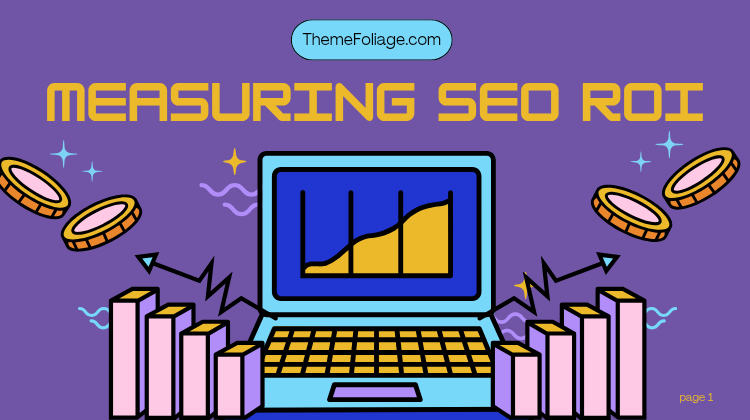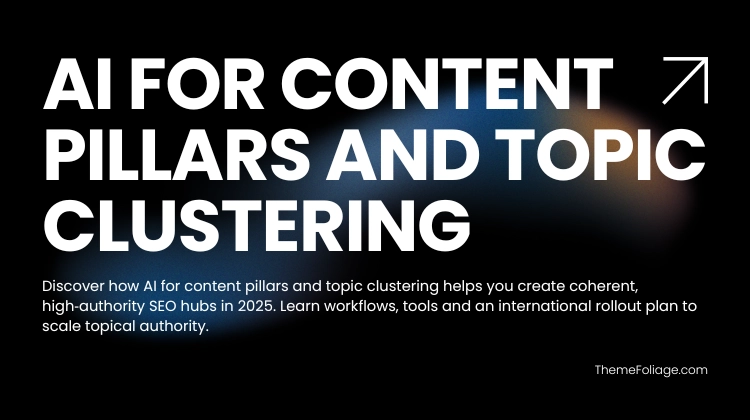For many marketers, proving the return on investment (ROI) of SEO can feel like trying to measure the invisible. SEO often delivers long-term benefits, improved visibility, authority, and brand recognition, that are difficult to tie directly to revenue.
Yet in 2025, with advanced analytics and smarter attribution models, measuring SEO ROI has become more precise than ever.
This guide will explain how to calculate your SEO ROI, which metrics matter, how to attribute conversions properly, and how to set up dashboards that prove the value of your organic strategy.
1. What is SEO ROI?
SEO ROI measures the financial return generated from your organic search efforts compared with the amount invested. It answers a simple but vital question: is your SEO strategy profitable?
The standard formula is:
SEO ROI = (SEO Revenue – SEO Costs) ÷ SEO Costs × 100%
For instance, if you earn $15,000 from organic traffic and spend $5,000 on SEO, your ROI would be 200%. The higher this number, the better your return.
2. Why measuring SEO ROI matters
In many companies, SEO competes with paid advertising for budget and attention. Proving ROI allows SEO professionals to demonstrate measurable impact and secure long-term investment.
- Helps allocate resources between SEO, PPC, and content marketing.
- Supports data-driven decision-making at the executive level.
- Justifies ongoing optimisation and technical improvements.
- Identifies which channels drive the highest lifetime value.
3. Tracking the right SEO metrics
Not all SEO metrics reflect financial performance. To link SEO to revenue, focus on metrics that influence conversions, leads, or sales.
Core SEO metrics to track
- Organic traffic: Visitors arriving through unpaid search results.
- Conversion rate: Percentage of organic visitors who complete desired actions (purchases, sign-ups, etc.).
- Keyword rankings: Visibility for high-intent queries.
- Click-through rate (CTR): The proportion of searchers who click your result.
- Customer acquisition cost (CAC): How much it costs to gain a customer via SEO.
Combining these figures provides a clearer view of SEO’s financial influence.
4. Building a revenue model for SEO
To calculate ROI, you first need to estimate how much revenue your SEO generates. This process depends on your business type, whether it’s e-commerce, lead generation, or media-based.
For e-commerce websites
- Use Google Analytics 4 or similar tools to attribute revenue to the “organic search” channel.
- Track assisted conversions where SEO contributed to the buyer journey.
- Assign monetary values to transactions influenced by organic traffic.
For lead-generation websites
- Assign an average lead value (e.g. $100 per lead).
- Track form submissions or call enquiries generated by organic visitors.
- Multiply leads by lead value to estimate SEO revenue.
This approach transforms soft metrics into measurable financial impact.
5. Understanding SEO attribution models
Attribution models determine how credit for conversions is assigned across different marketing channels. Choosing the right one is crucial when measuring SEO ROI.
- First-touch attribution: Credits SEO if it was the first channel that introduced a user.
- Last-touch attribution: Gives credit to the final interaction before conversion.
- Linear attribution: Distributes credit equally across all touchpoints.
- Time-decay attribution: Gives more weight to recent interactions.
- Data-driven attribution: Uses machine learning to assign credit based on actual conversion data (recommended in 2025).
For long sales cycles or multi-touch journeys, data-driven attribution models now provide the most accurate picture of SEO performance.
6. Using experiments to isolate SEO impact
To prove that SEO changes drive measurable results, run controlled experiments. By comparing test pages (with optimisations) against control pages (without changes), you can quantify uplift in traffic or conversions.
Steps to run an SEO experiment
- Define your hypothesis (e.g. “Adding FAQs will increase CTR by 10%”).
- Choose comparable URLs within the same topic cluster.
- Apply the SEO change to the test group only.
- Measure performance after 4–6 weeks using Google Search Console data.
- Analyse differences to confirm significance.
Tools like SearchPilot and SplitSignal automate this process, providing reliable experiment results without guesswork.
7. Using dashboards to measure and communicate ROI
Dashboards turn raw SEO data into visual insights. They’re essential for communicating performance to stakeholders.
Recommended dashboard tools
- Google Looker Studio: Integrates with Search Console, GA4, and Sheets for custom visual reports.
- DataBox: Pulls SEO metrics from multiple tools into one central dashboard.
- AgencyAnalytics: Ideal for agencies needing branded client reports.
Essential elements of an SEO ROI dashboard
- Organic sessions and new users.
- Goal completions and revenue attributed to SEO.
- Conversion rate trends over time.
- Keyword visibility changes and CTRs.
- ROI visualisation (e.g. cost vs. revenue charts).
Well-designed dashboards make complex data clear and actionable.
8. Common challenges when measuring SEO ROI
- Delayed results: SEO improvements may take months to impact traffic.
- Attribution complexity: Users often interact with multiple channels before converting.
- Data inconsistency: Different analytics tools may report varied figures.
- Brand influence: Organic searches for branded terms might overstate SEO’s role.
Overcoming these issues requires combining analytics with business intelligence and consistent tracking frameworks.
9. Advanced ROI measurement techniques
Customer lifetime value (CLV) integration
Calculate ROI not only by immediate sales but by long-term customer value. If SEO brings high-retention customers, its ROI compounds over time.
Predictive modelling
Use AI tools to predict future ROI based on past trends. These models estimate traffic and revenue outcomes from specific keyword or content investments.
Cross-channel synergy tracking
Measure how SEO supports other channels, such as increasing brand searches that improve PPC performance or enhancing conversion rates on social referrals.
10. Communicating SEO ROI to stakeholders
Numbers alone don’t convince, context does. When presenting ROI data, connect metrics to business goals and customer outcomes.
- Show trends rather than isolated figures.
- Link results to specific actions taken (e.g. technical fixes, new content).
- Highlight incremental gains, such as reduced CAC or higher conversion rates.
Adding visuals like bar charts, attribution flow diagrams, and funnel visualisations makes your data more persuasive.
11. Example ROI calculation
Let’s take a simple example:
- Total organic revenue in Q1: $40,000
- Total SEO spend (tools, content, staff): $10,000
ROI = ($40,000 – $10,000) ÷ $10,000 × 100 = 300%
This means every dollar invested in SEO returned $3 in value, a strong performance benchmark.
12. The future of measuring SEO ROI
As analytics evolve, SEO ROI measurement will become more holistic. We’ll move beyond last-click revenue towards full-funnel visibility, connecting search impressions to brand growth, content engagement, and even retention.
AI will play a major role by automating data blending and forecasting outcomes, making ROI measurement faster and more accurate.
Conclusion
Measuring SEO ROI isn’t just about proving worth, it’s about improving performance. By combining attribution models, controlled experiments, and real-time dashboards, you can demonstrate the tangible business value of organic search.
In 2025, the best SEO professionals aren’t only optimisers, they’re analysts who connect visibility to revenue.
You should read this article to strengthen up your SEO – Visual SEO.



